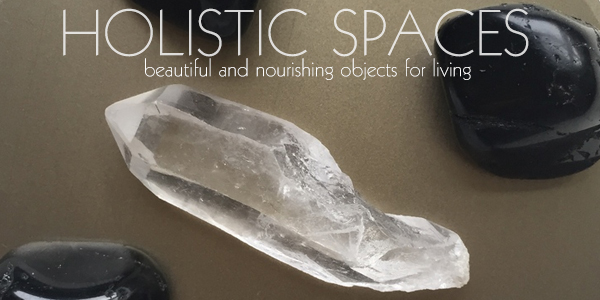Almost like clockwork at the start of each year, top paint manufacturers debut their new color schemes and trot out their "it" colors. Coral Reef, Springtime Dew, Guildford Green, Pink Ground; so tempting — and sure to perk up a home, especially in the winter doldrums.
Conventional wisdom says paint is the easiest, least expensive quick-change artist in a homeowner's tool box. Problem is, as with much conventional wisdom, it's not quite so simple. "It's a big commitment to paint walls," says New York City architect Anjie Cho. Choosing a color after painting swatches or taping paint chips to a wall, checking them out during day and at night, buying brushes, rollers, drop cloth, primer, sand paper, tape, and finally applying one or two coats of the winning shade obviously takes time.
And then — the color may look different once it covers an entire wall or room because lighting and furnishings affect results. "I often see what I call 'a paint chip gone wrong,'" says San Francisco designer Claudia Juestel, adding, "As a general rule, when applied to four walls, a light color looks lighter and a bright color appears brighter than the small paint chip or swatch."
Of course, you can hire a professional painter or color expert who understands the nuances, but they can be expensive. The new wisdom about paint, in a world where the hot hues you spot on Pinterest one day can leave you with painter's remorse the next: Tread carefully when it comes to trends. "Their appeal may be fleeting," says Juestel. She advises picking a palette — walls and furnishings — that works with your home, amount of light, and personality. "There's no color that's bad or dated, but a combination of colors can appear so. Mauve or blue-gray by themselves are fine, but if you put them together they can scream '80s."
The other new wisdom? If a dose of trend is what you need to make your place feel updated, adding color is still a solid place to start, even if you stick to a low-commitment approach. Here are alternatives to inject 2015 colors without painting, then repainting when new palettes debut:
1. Think artwork. Art is among many design professionals' favorite sources of color. If your budget is tight, Cho suggests making your own masterpiece atop canvas — a solid or abstract, as one client did. Or go online and have a favorite photo printed in a large scale atop canvas. Los Angeles designer Mae Brunken likes to frame wallpaper, usually from Flavor Paper, in a large white museum-style frame in her office, and changes it out regularly. Los Angeles designer Erica Islas used similar white frames to showcase colorful children's artworks on off-white painted walls in clients' living room. She introduced more color with guitars on an opposite wall, sea foam rug underfoot, and blue and green pillows atop a blue sectional.
2. Add greenery and flowers. Greenery and flowers — even a single orchid plant — can inject color.
3. Play up accents. A colorful throw, Sari, pillows, lamps, vases, headboard, towels can all add color, and sometimes texture, says Brunken. Even many kitchen appliance companies now offer their products in a rainbow of hues. Keurig's 2.0 brewer (and a multitude of other products for the kitchen) comes in Pantone's 2015 color of the year, Marsala.
4. Showcase one colorful chair, chaise, or ottoman. It doesn't have to be an expensive sofa or all your seating, but one new upholstered or slipcovered piece can make a difference. Florida designer Holly McCall enlivened her neutral-colored office simply by painting her IKEA chairs with Annie Sloan's Antibes green chalk paint.
5. Judge a book by its jacket. They don't all have to be serious and leather bound, or wrapped in original, maybe, dusty jackets. Brunken likes the idea of covering your books in vivid tones or sophisticated white for a wow background effect. The idea takes time if you do it yourself, but there are companies that do the work for you; one color wrapping them by the foot.
6. Focus on the 5th wall. Chicago designers David Kaufman and Tom Segal begin a blank room's color scheme with the rug choice. "It's the grounding for the design, figuratively and literally," Segal says. "It sets the tone, palette, and from there you can select interesting fabrics." Certain rugs also add a handcrafted, knotted touch, says Christopher Frederick, president of Organic Looms, whose rugs are made in Nepal. For a sleek, hip, almost boutique hotel-style black and white bedroom, Chicago designer Aimee Wertepny went with a rug that's a "neon-electric-teal-vintage-electro-mod pop of color for the otherwise monochromatic palette," she says.
Still want to paint?
Here's how to get color with a longer shelf life, from Jackie Jordan of Sherwin-Williams:
• A color of the year is often trendy. You don't have to use it for an entire room, consider it in small doses.
• Pick a color after placing a swatch or panel of it behind a sofa or by the room's trim or floor so you see how it really will look. Go a bit darker rather than lighter. Pick the color one chip down from what you initially thought.
• Also consider neutrals, for a more subtle change. Kilim Beige has been the company's No. 1 color choice for several years; Accessible Beige is a popular newcomer, and Light French Gray is expected to become another classic.
• Easier to go white? Not so fast, since there are so many variations — warm to cool, with pink to blue undertones.
• Don't forget the right finish. Flat for walls and ceilings conceals imperfections, is durable and washable. Trim represents more of a personal choice, but best in satin, semi-gloss or high-gloss, depending on how bold you want to get.
...read full article
by Anjie Cho





